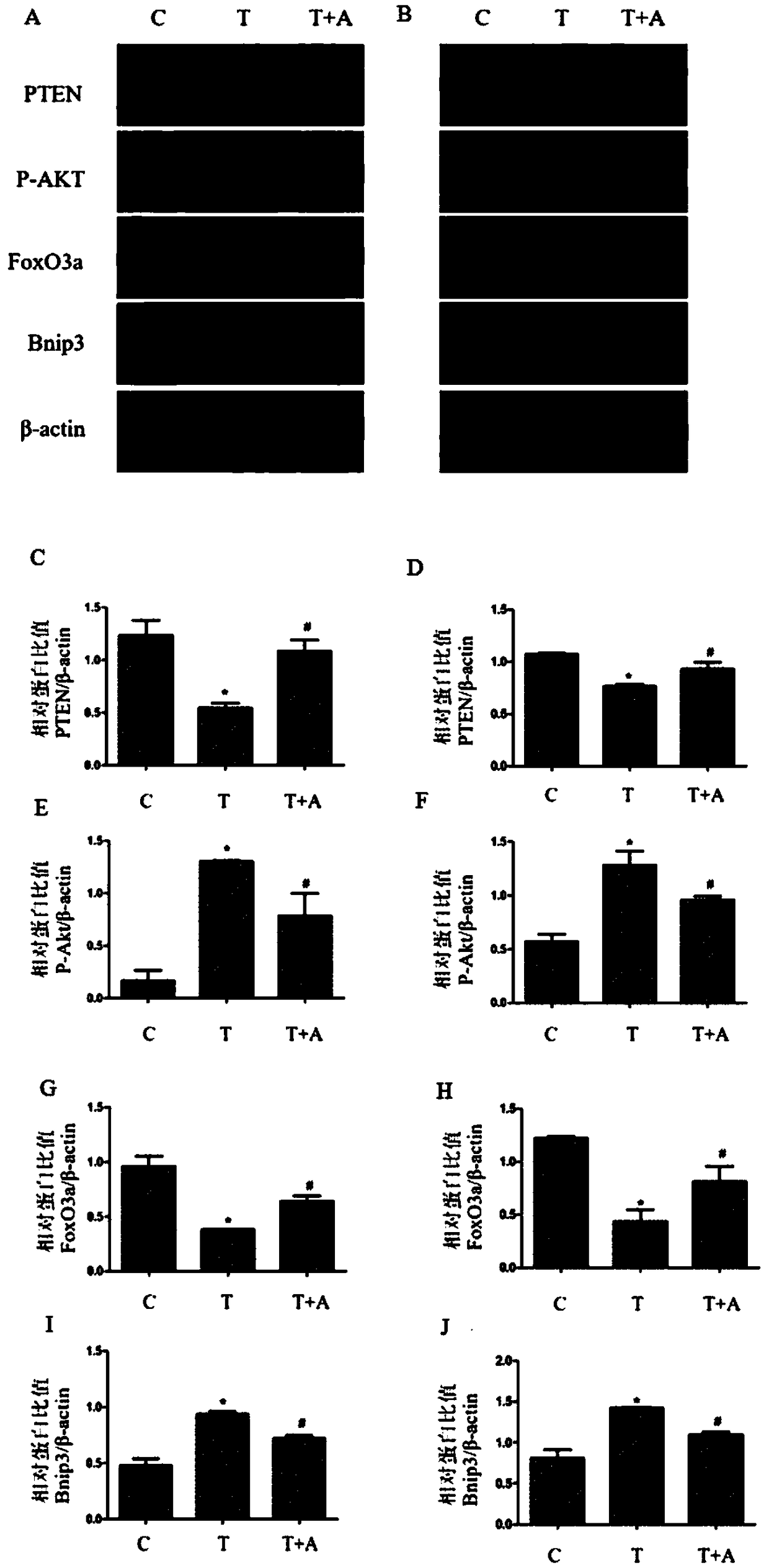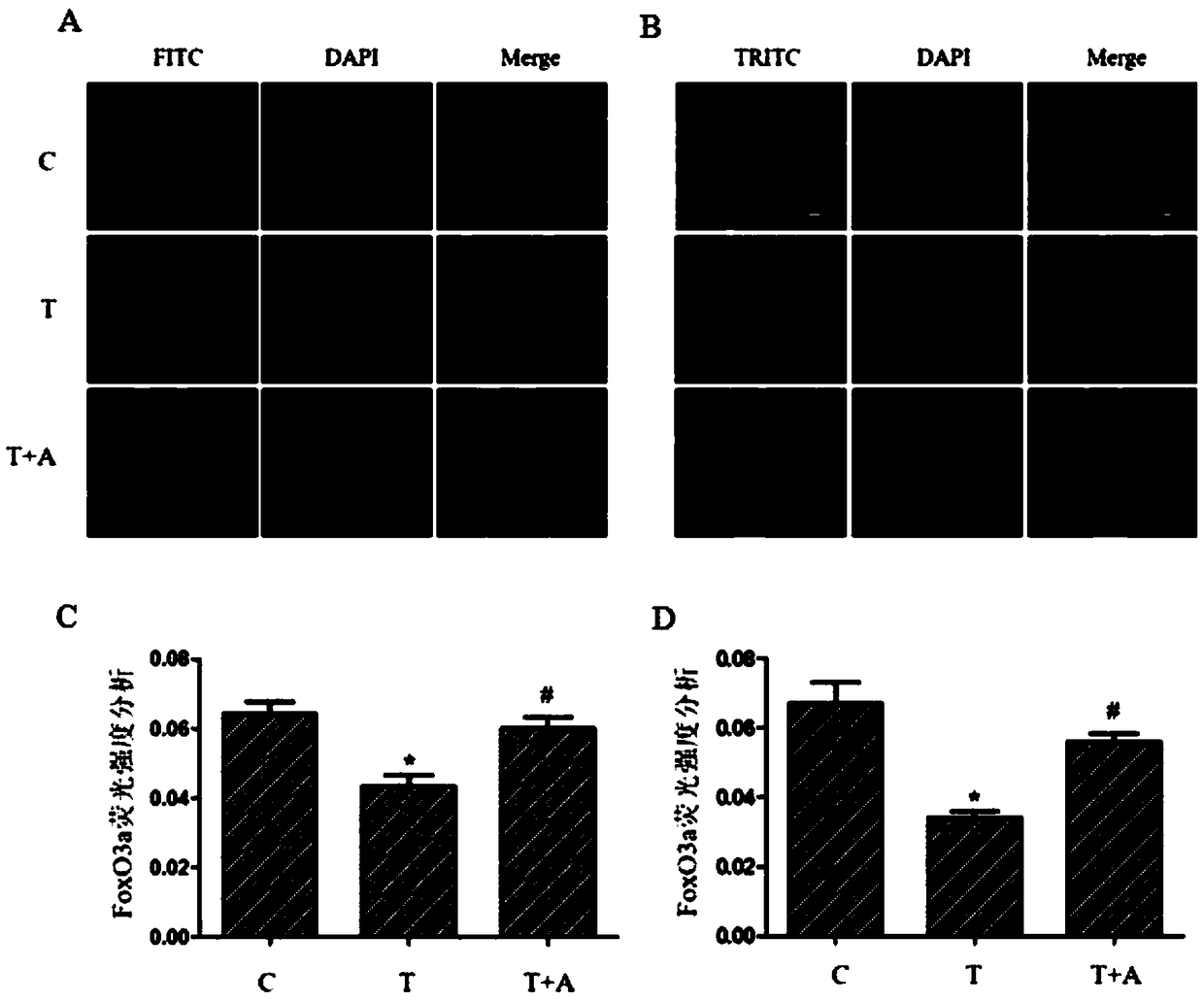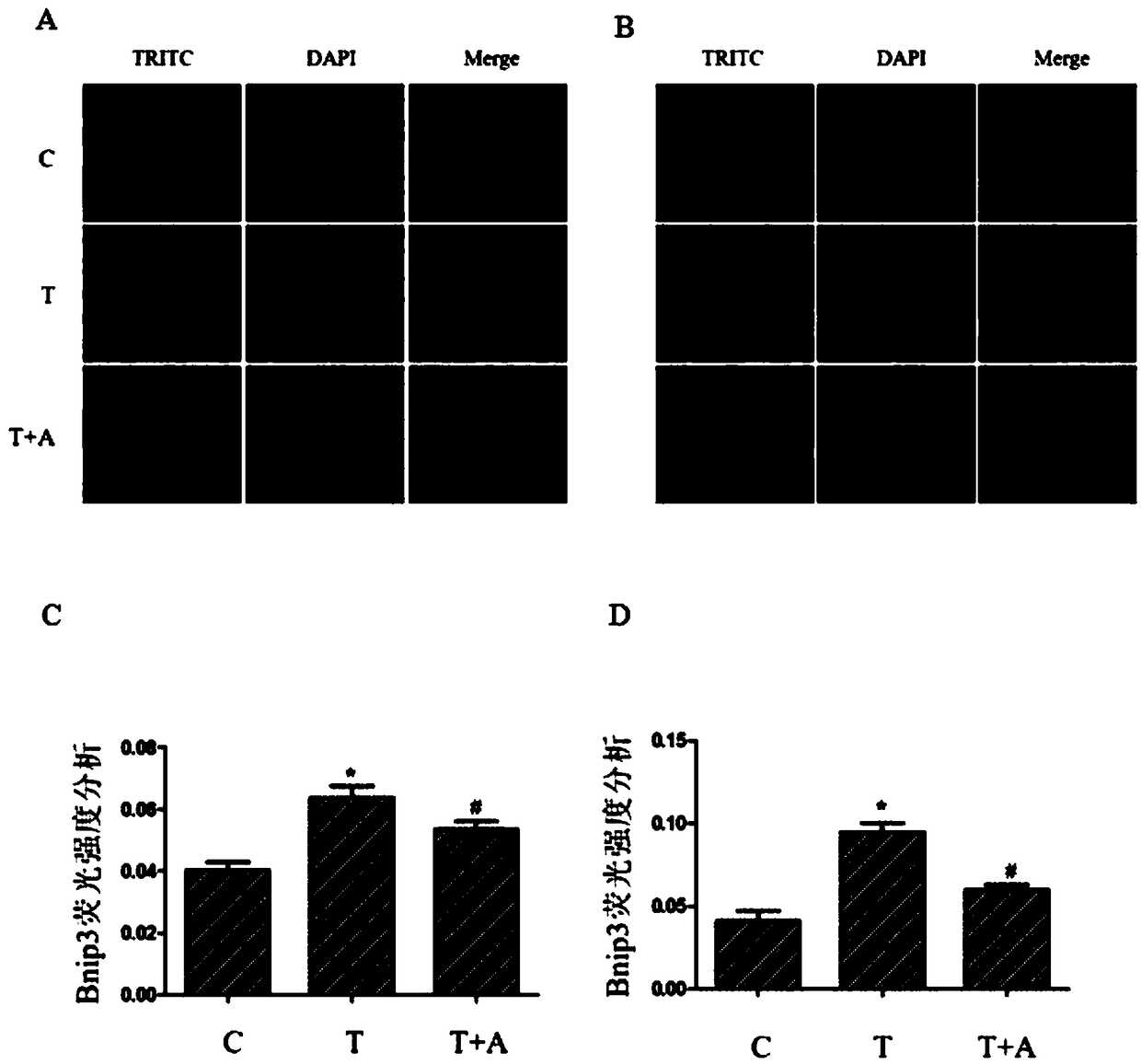Application of Apelin-13 in preparation of drugs for treating cerebral trauma
A brain trauma and drug technology, applied in the field of biomedicine, can solve the problem that the mechanism of action is not completely clear.
- Summary
- Abstract
- Description
- Claims
- Application Information
AI Technical Summary
Problems solved by technology
Method used
Image
Examples
Embodiment 1
[0019] Example 1 Cell Culture Reagent Preparation
[0020] 1.1 High glucose DMEM cell culture medium
[0021] High glucose DMEM cell culture medium (powder) 13.4g, 3.7g NaHCO 3 1. Double antibodies (100 U / mL penicillin and 100 μg / mL streptomycin) were dissolved in 1 L of double distilled water, stirred with a magnetic stirrer until completely dissolved, and the pH was adjusted to 7.1-7.2. Sterilize by positive pressure filtration with a 0.22μm pore size filter membrane, pack in sterilized 100mL glass bottles, and store in a refrigerator at 20°C. Samples were taken and cultured in a constant temperature incubator at 37°C for sterility test.
[0022] 1.2 RPMI 1640 cell culture medium
[0023] Take a pack of RPMI 1640 medium (powder) and 2g NaHCO 3 Dissolve in 1L double-distilled water, and the remaining steps are the same as the configuration of high-glucose DMEM medium.
[0024] 1.3 Trypsin working solution (0.25%)
[0025] 2.5g of trypsin and 0.2g of EDTA were dissolved ...
Embodiment 2
[0028] Embodiment 2 reagent preparation
[0029] 2.1 Drug preparation
[0030] 1) NGF stock solution: Add 1 mL of sterile PBS containing 0.1% bovine serum albumin to the freeze-dried powder to make a 100 μg / mL stock solution, divide into 10 tubes, 100 μL per tube, and store at -80 °C. Each tube was further diluted with sterile PBS to a final concentration of 10 μg / mL for a total of 1 mL. When used, dilute it with medium to make the working solution concentration 50ng / mL.
[0031] 2) Thrombin stock solution: Add 10 mL of sterile PBS containing 0.1% bovine serum albumin to each bottle of lyophilized powder, mix well and filter to make the stock solution concentration 100 U / mL, store at -20°C. Dilute it to the working solution concentration of 25U / mL (PC-12 cells) and 75U / mL (HT-22 cells) before use.
[0032] 3) Apelin-13 stock solution: take 5 mg of Apelin-13 and add 1 mL of PBS to prepare 5 μg / μL. According to its molecular weight is 1550.8, calculate the molar concentratio...
Embodiment 3
[0057] Embodiment 3 experimental method
[0058] 3.1 Cell Culture
[0059] Mouse hippocampal neuron HT-22 cells in RPIM-1640 medium, 10% FBS (Hangzhou Sijiqing), 37°C, 5% CO 2 cultivated under conditions.
[0060] Rat adrenal pheochromocytoma PC-12 cells in high-glucose DMEM medium, 10% FBS (Hangzhou Sijiqing), 37°C, 5% CO 2 Under the conditions of culture, 50ng / mL NGF needs to be added to induce the differentiation of cells into neurons.
[0062] 1) Take out the cryopreservation tube containing HT-22 or PC-12 cells from the liquid nitrogen, put it into a 37°C water bath quickly, and let it melt (about 1min).
[0063] 2) Dilute the frozen cell solution to 3ml with RPIM-1640 or DMEM basal medium at room temperature.
[0064] 3) Centrifuge at a speed of 1000 rpm for 5 minutes.
[0065] 4) Discard the supernatant, resuspend the cells with RPIM-1640 or DMEM complete medium, transfer to the cell culture dish, 37°C, 5% CO 2 nourish.
[0066] 3.1....
PUM
 Login to View More
Login to View More Abstract
Description
Claims
Application Information
 Login to View More
Login to View More - R&D
- Intellectual Property
- Life Sciences
- Materials
- Tech Scout
- Unparalleled Data Quality
- Higher Quality Content
- 60% Fewer Hallucinations
Browse by: Latest US Patents, China's latest patents, Technical Efficacy Thesaurus, Application Domain, Technology Topic, Popular Technical Reports.
© 2025 PatSnap. All rights reserved.Legal|Privacy policy|Modern Slavery Act Transparency Statement|Sitemap|About US| Contact US: help@patsnap.com



